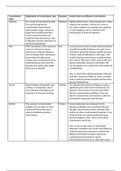College aantekeningen
Lecture notes Communication Cultures
- Instelling
- Vrije Universiteit Amsterdam (VU)
A complete summary of the important information from the lectures of Communication Cultures. Easy to look things up and summarize important concepts.
[Meer zien]













